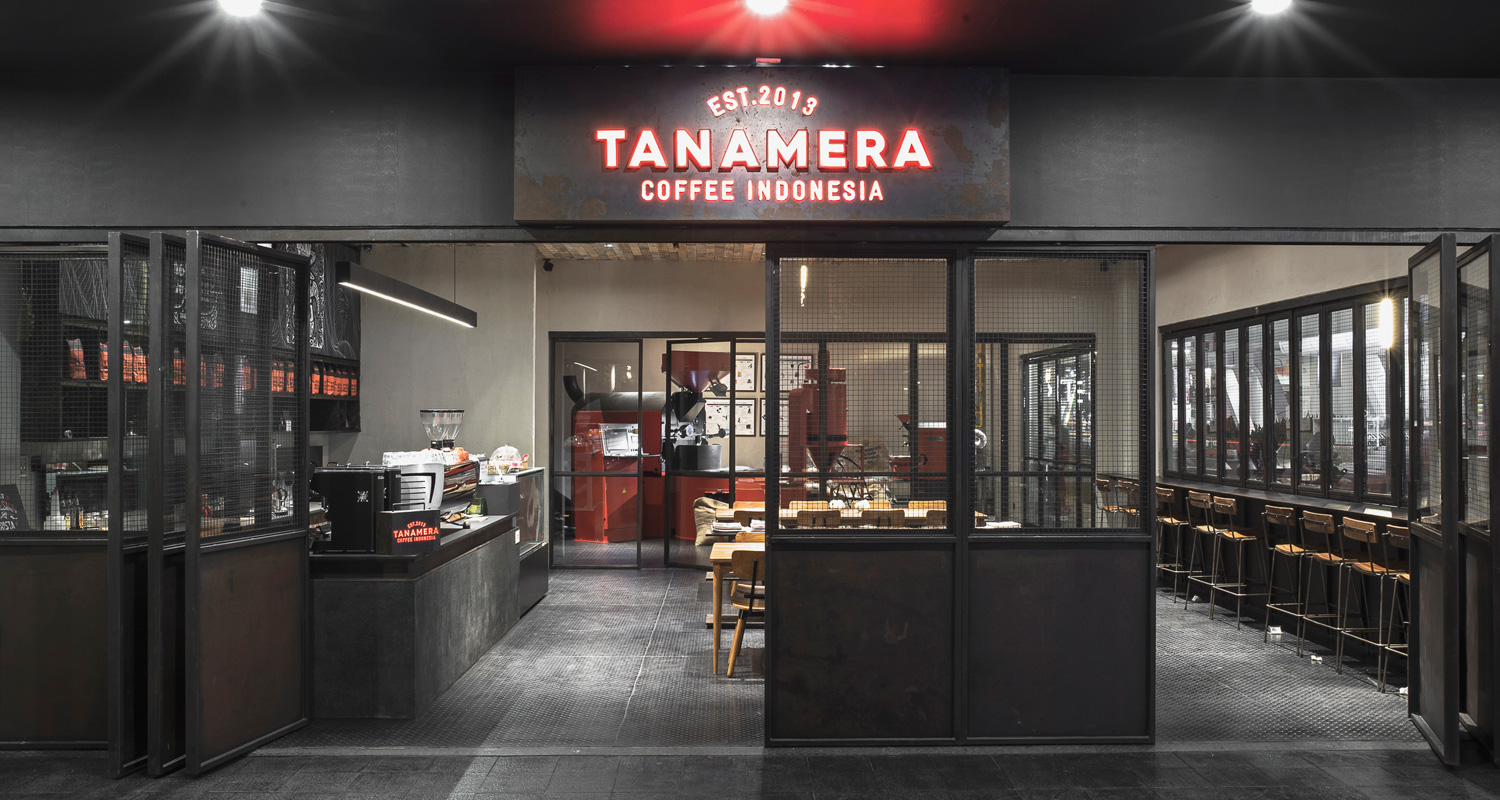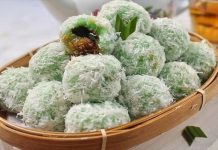Certain dishes are eaten during the Chinese New Year celebrations for their symbolic meaning. These lucky foods are served especially on New Year’s Eve, which is believed to bring good luck for the coming year. The symbolism of these foods is mainly based on their appearance as well as pronunciations.
Here are the most common Chinese New Year foods that are consumed for good luck:
Longevity noodles
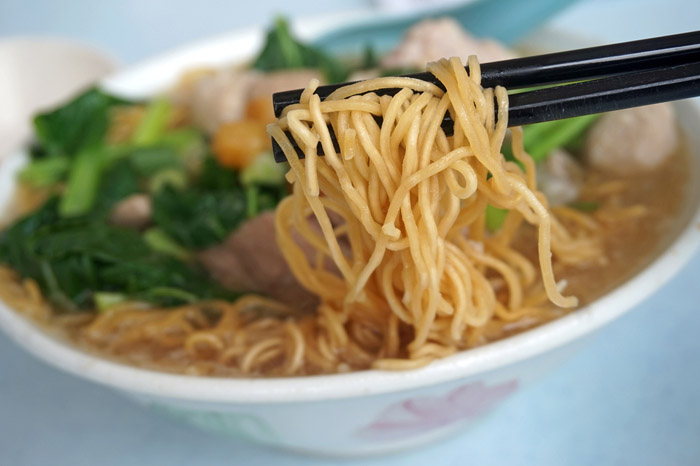
Longevity noodles (Chang Shou Mian), just like its appearance, symbolize a wish for long and healthy life. Chang Shou Mian are longer than normal noodles and served uncut, either fried or boiled.
Dumplings
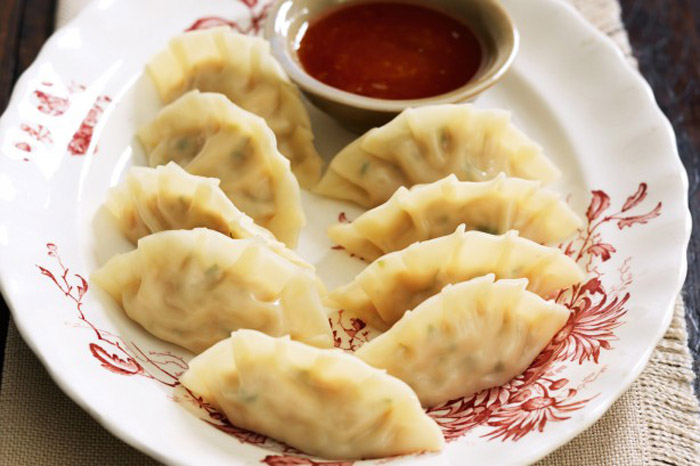
Dumplings or Jiao Zi traditionally resemble ingots or money, hence eating dumpling is believed to usher in wealth. This dish is widely popular in China, especially in North China. Dumplings generally consist of minced meat (pork, diced shrimp, fish, ground chicken, beef), vegetables, and wrapped in elastic dough skin. They can be cooked by boiling, steaming, frying or baking.
Fish

In Chinese, “fish” (Yu) sounds like ‘surpluses or ‘abundance. Chinese people always like to have a surplus at the end of the year; so fish is a dish that should be served at New Year feast. Usually families buy a whole fish, which symbolizes unity, and it is typically steamed with ginger and a light soy sauce. It’s is also important to leave leftovers for the next day because this signifies that the prosperity will overflow.
Glutinous rice cake (Nian gao)
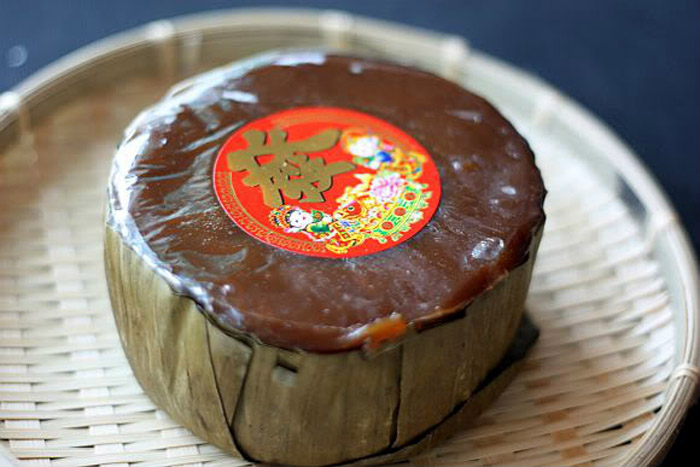
This glutinous rice-based cake (known as Kue Keranjang in Bahasa Indonesia) actually can be found year round, but it is traditionally consumed during Chinese New Year for good luck. Nian Gao is a homonym for ‘higher year’—which means that you’ll be raising yourself in status in the coming year. Nian Gao is made of sticky rice, sugar, chestnuts, Chinese dates, and lotus leaves.
Sweet rice balls (Tang yuan)
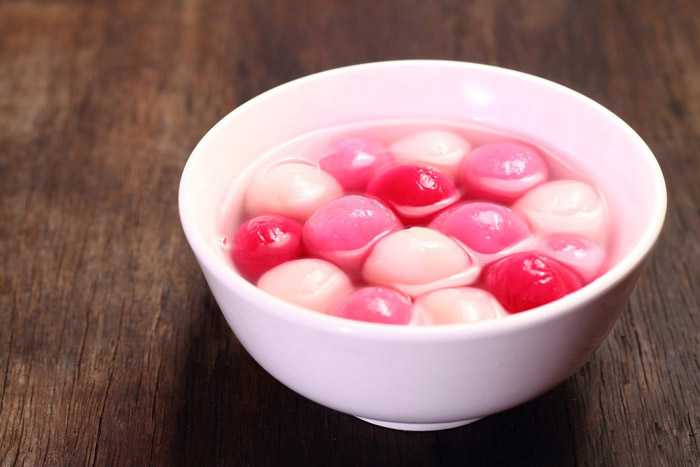
Tang Yuan is typically consumed during the 15th day of Chinese New Year celebration, known as the Yuanxiao Festival. The 15th day is also the first night a full moon is apparent during the lunar year. The roundness of the rice balls signifies a complete circle of harmony and unity within family. Usually, these sweet rice balls are filled with sesame paste, red bean, or peanuts, and served in a sweet soup.
Good fortune fruits
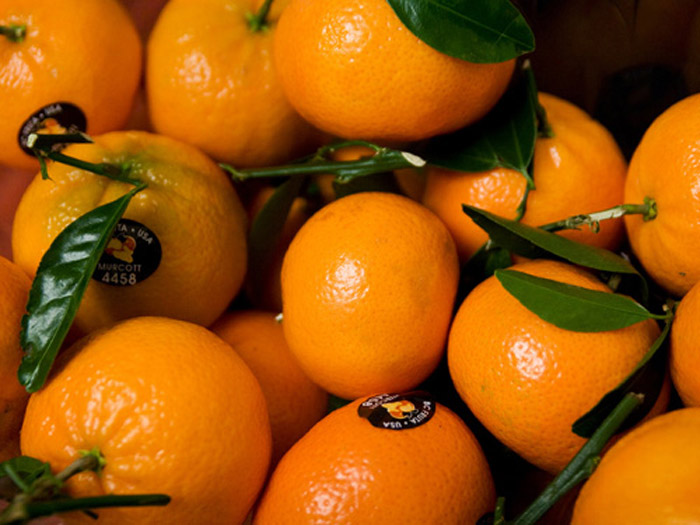
Certain fruits are eaten during the Chinese New Year period, such as tangerines and oranges. They are selected as they are particularly round in shape and golden in color, which symbolizing fullness and wealth. Eating and displaying tangerines and oranges is believed to bring good luck and fortune due to their pronunciation (Cheng) which sounds the same as the Chinese for ‘success’.
Spring rolls (Chun Juan)
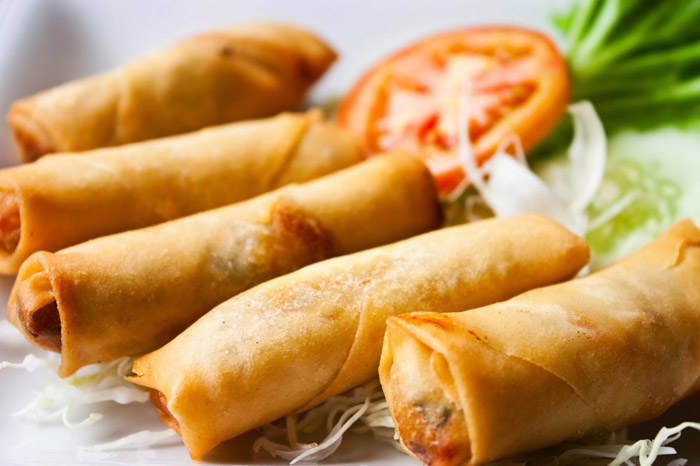
Spring roll is a Cantonese dim sum dish that’s named after the Spring Festival. The golden color of the fried spring rolls represents gold bars, which symbolize wealth. Usually, spring rolls are filled with meat or something sweet.
Prosperity Toss (Yu Sheng)
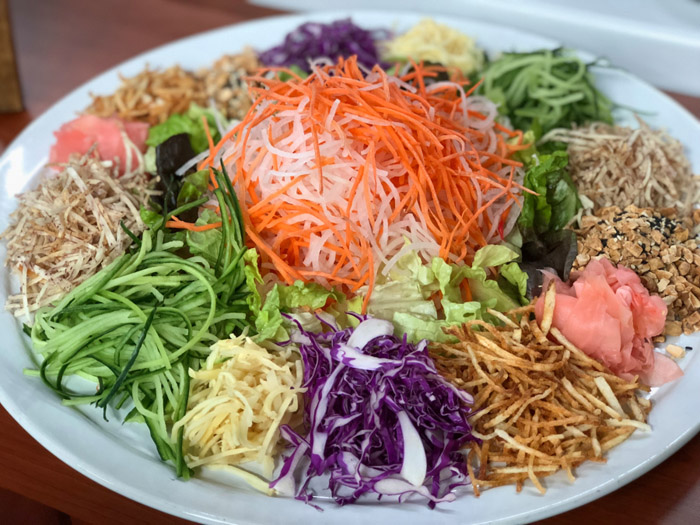
The next Chinese New Year’s specialty is Yu sheng (yee sang) which is a Chinese dish in the form of a fresh fish salad (usually tuna or salmon) plus sliced fresh vegetables such as radishes and carrots.
Uniquely, Yu Sheng is usually eaten by being stirred together by everyone present, and held aloft while saying aloud prayers and hopes in the new year. The activity of stirring the yu sheng with sauce and then lifting it high is considered a symbol of hope and prayers that are said will be answered. The tradition of eating Yu Sheng with your family is called lo hei.
Chinese Tea Eggs
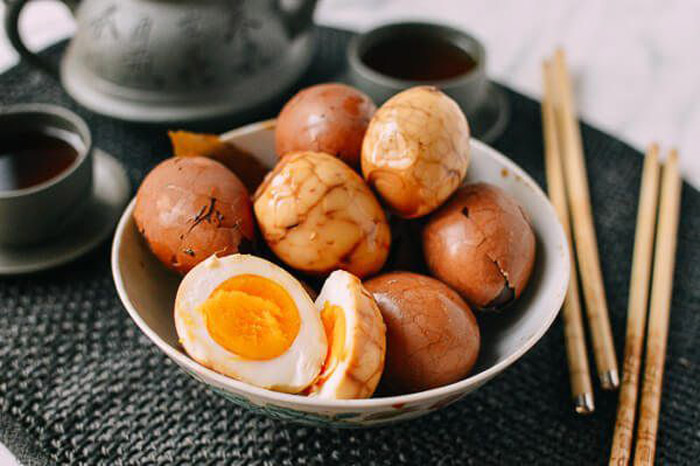
Egg tea is boiled egg with soy sauce, spices and tea leaves. When half cooked, crack the egg shells so that the spices absorb into the eggs. Because it uses tea leaves, this typical Chinese New Year food has a seductive aroma. The presence of this typical Chinese culinary is a symbol of fertility.
Chicken, Duck or Pig
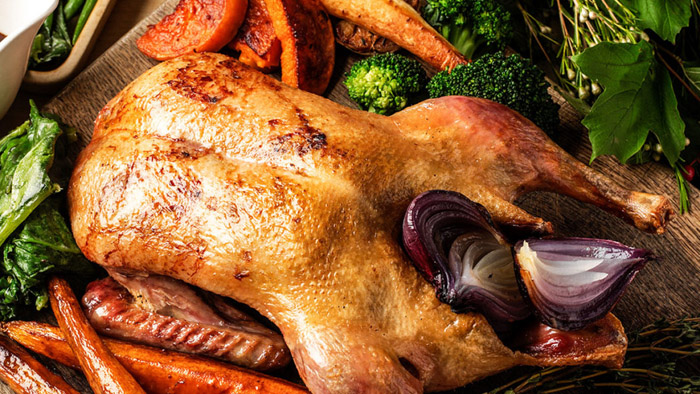
The next typical Chinese food is chicken served whole as a symbol of a whole and happy family. Not only chicken, sometimes this Chinese culinary specialty is replaced or served together with ducks.
Eight Treasure Soup
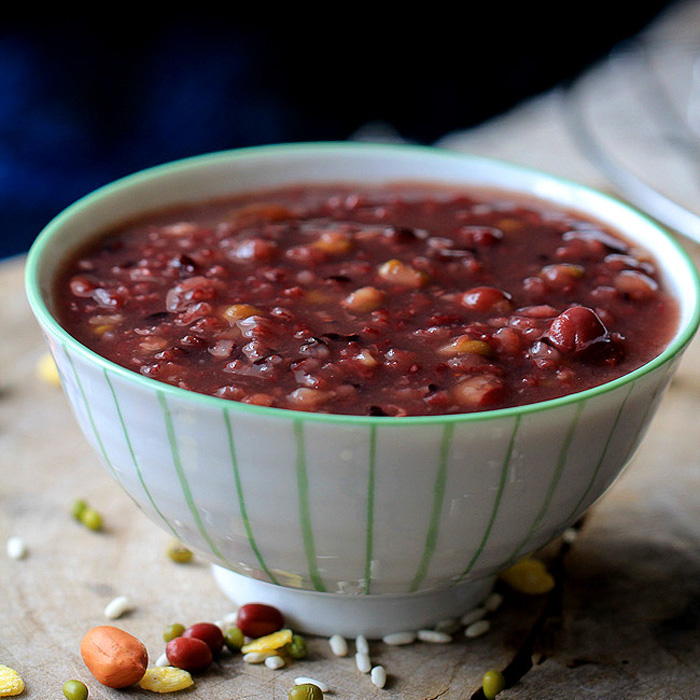
Called Eight Treasure Soup, this Chinese New Year’s special food has eight basic ingredients, namely sea cucumber, stove mushroom, fish, shrimp, fish belly, dried clams, abalone, black mushroom, ginko beans, and lotus seeds. This Chinese-style soup is eaten with the hope of a business or business that can develop rapidly in the new year.
Sunflower Seeds
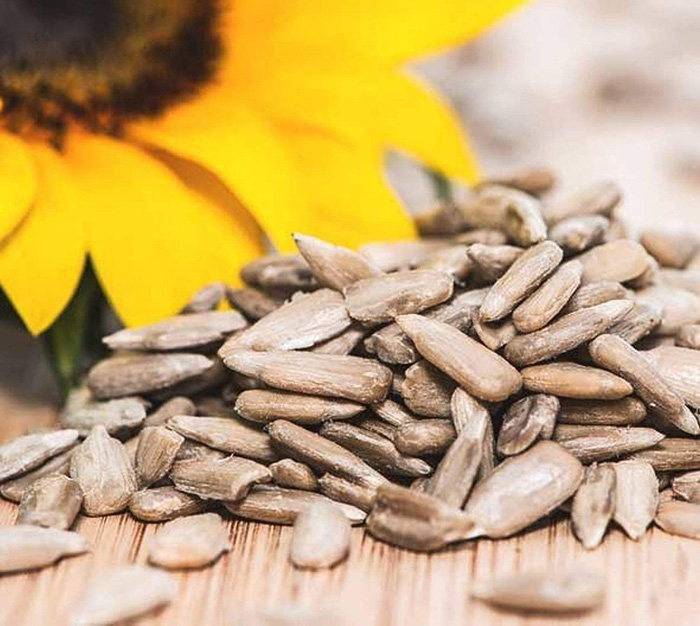
One of the typical Chinese New Year snacks is Sunflower seeds. While gathering with family, sunflower seeds are certainly a favored snack during Chinese New Year. However, who would have thought that the presence of a sunflower seeds on Chinese New Year was a symbol of fertility or early childbearing. In addition to sunflower seeds, sometimes this Chinese New Year snack is replaced by nuts or candy.
Kue Mangkuk
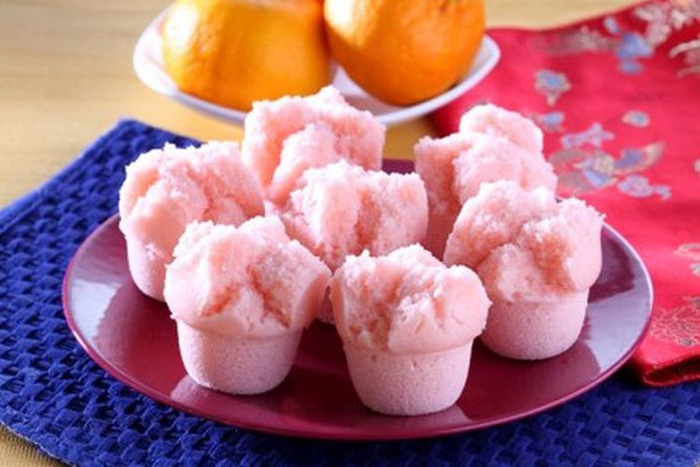
In addition to baskets, cakes that are often present during Chinese New Year celebrations are cupcakes or ‘kue mangkuk’. Usually this cake is placed at the top of the basket cake arrangement and is made in red which is identical to the Chinese New Year celebration. This blooming cupcake shape symbolizes a growing fortune.
Sweets
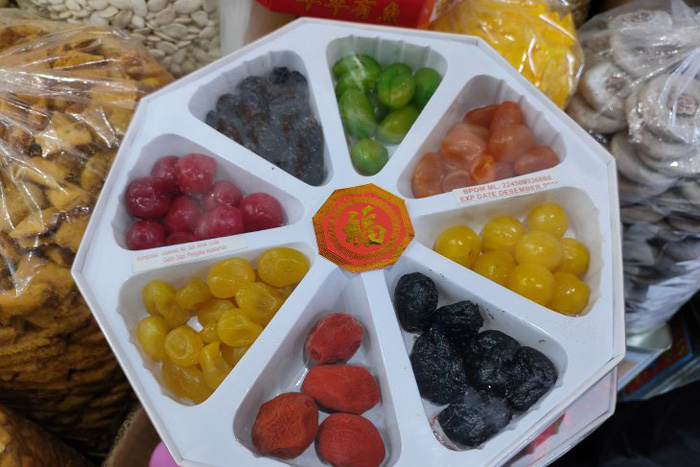
The next typical Chinese culinary is sweets served in a box or an eight-square-shaped place. These octagonal candies are often called the “tray of happiness.” The presence of these sweets has many meanings such as candied lotus seeds which symbolize fertility and lychee sweets as a symbol of a strong family.


